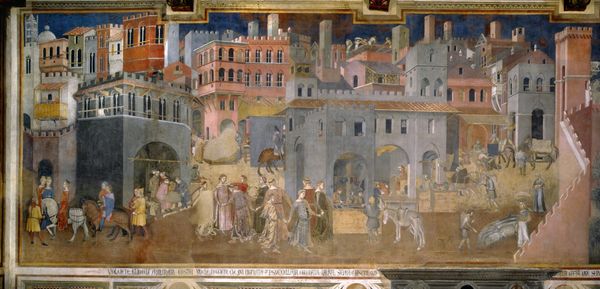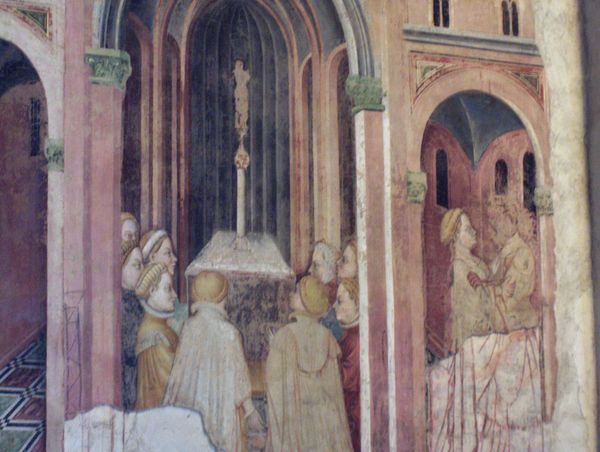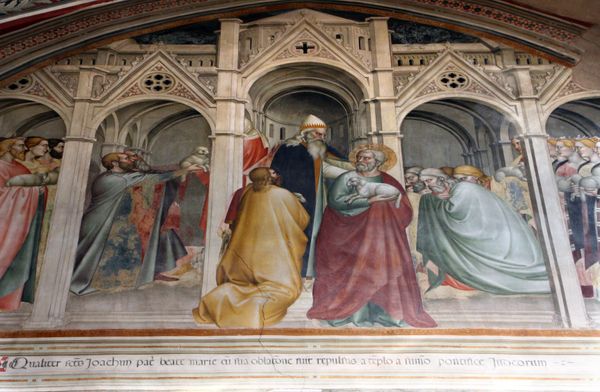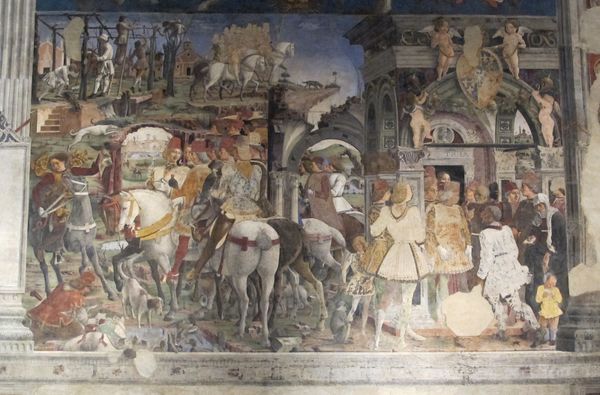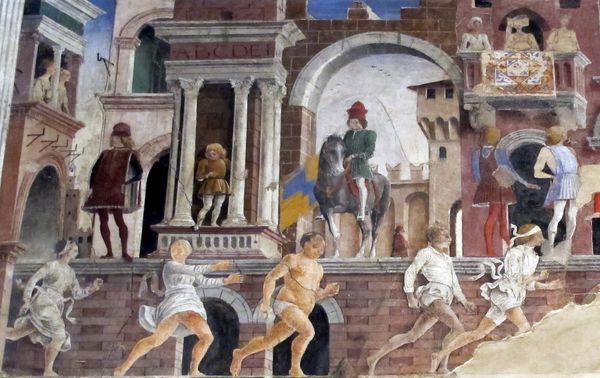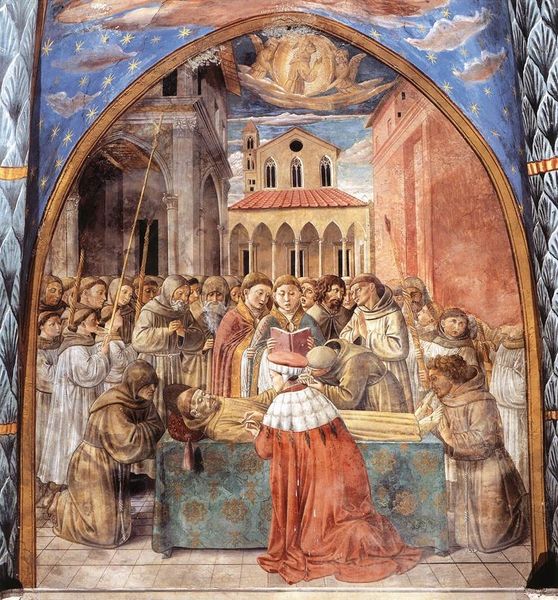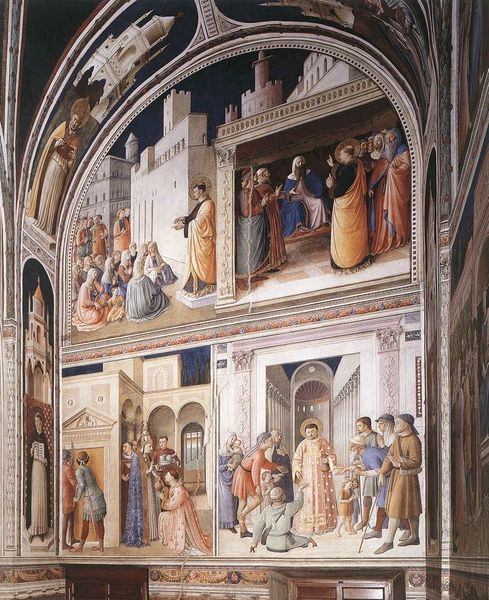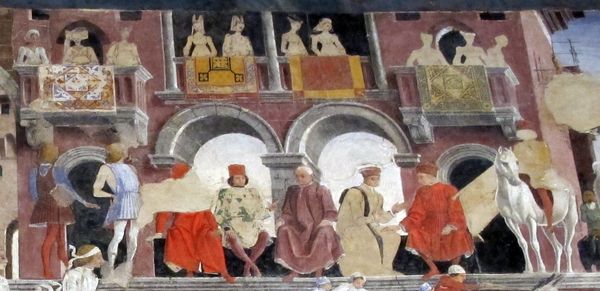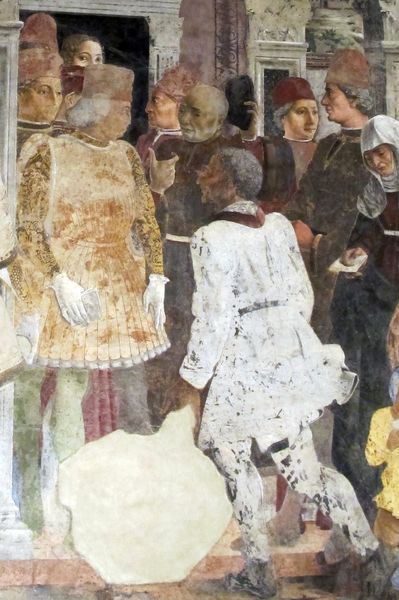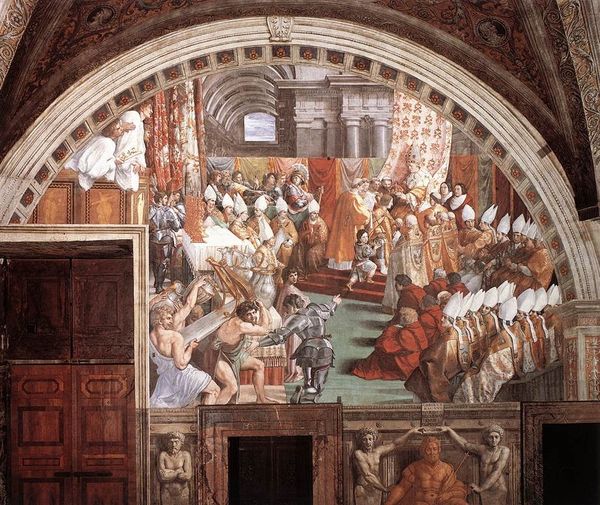
painting, fresco
#
portrait
#
painting
#
figuration
#
fresco
#
genre-painting
#
history-painting
#
italian-renaissance
Copyright: Public domain
Editor: This is a detail from "April: Frescos in Palazzo Schifanoia" from around 1470 by Francesco del Cossa. The materials, as indicated, are frescos. The artist has depicted figures in what looks like a staged environment, and the garments almost appear real! What can you tell me about it from your perspective? Curator: Considering the materiality, this fresco offers us a window into the labour practices of the time. Observe how the pigments were sourced and applied, reflecting the patronage system and the social status linked to certain materials. Think about the layers of plaster, the grinding of pigments, the very hands that built this narrative on the wall, revealing a world where art and craft are not separated, but rather intertwined within the same mode of production. Editor: That is quite interesting. I didn't initially see the labor, but it is inherent to its very existence. Is that what you find most intriguing about it? Curator: Exactly. Look at how the clothing indicates wealth; what dyes were used, the labour required to produce that cloth. And this wasn't mere decoration. This palace was a place of work and this image serves to reinforce a particular social order through its ostentatious display. Also note the building within the painting; that had to be rendered precisely using knowledge from architecture specialists of the period, reflecting its material reality. Editor: Fascinating how that one element, frescos, and material choices open up these diverse discussions! I have something to think about now when looking at Renaissance art. Curator: Yes, stepping beyond purely aesthetic considerations unveils a far richer understanding.
Comments
No comments
Be the first to comment and join the conversation on the ultimate creative platform.
